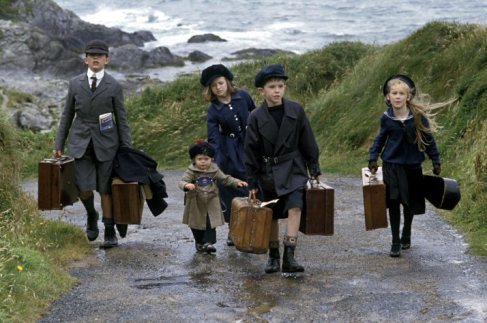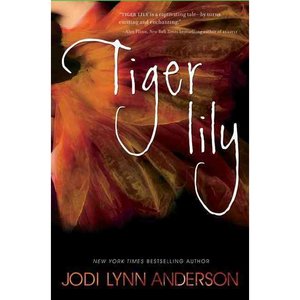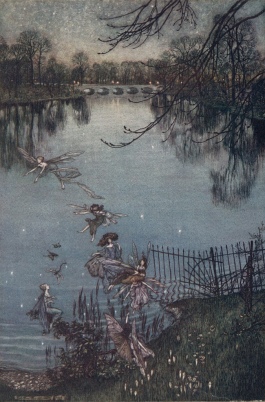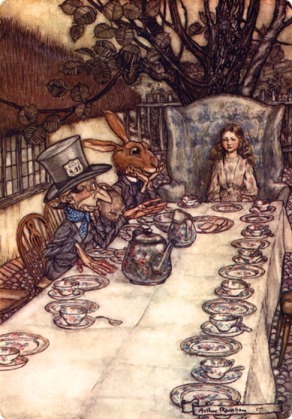For my final paper, I plan on examining how children’s literature is often written for two audiences: children and adults. In stories such as Alice in Wonderland, “Little Red Riding Hood,” and Pinocchio.
 Lewis Carroll’s Alice novels can definitely be enjoyed by both little kids and adults alike. The whimsical nature of the text and the fancy of Wonderland appeal to children – it is a brand new world filled with magic, imagination, and adventures. Little kids can relate to Alice as she explores the wonders and awes of the new world. At the same time, the novels, especially Alice through the Looking Glass, are written in a manner that is filled with logic, politics, and even drug references. In this sense, adults can appreciate the subtle humor and adult themes. This website explores the theme of logic in the story.
Lewis Carroll’s Alice novels can definitely be enjoyed by both little kids and adults alike. The whimsical nature of the text and the fancy of Wonderland appeal to children – it is a brand new world filled with magic, imagination, and adventures. Little kids can relate to Alice as she explores the wonders and awes of the new world. At the same time, the novels, especially Alice through the Looking Glass, are written in a manner that is filled with logic, politics, and even drug references. In this sense, adults can appreciate the subtle humor and adult themes. This website explores the theme of logic in the story.
In addition to Alice in Wonderland, fairy tales also have two audiences. Most notably, the story of “Little Red Riding Hood” contains adult imagery and themes that are most definitely not appropriate for little children. Many versions of the story involve the notions of a girl losing her virginity and the idea of male predators. However, little children will most likely not pick up on these mature themes and only take away the simple moral of the story – don’t talk to strangers.
Pinocchio also contains both adult and children’s themes. Little boys and girls are enthralled by the many adventures of the poor puppet who never seems to have success. They both pity and root for Pinocchio at the same time. Collodi also incorporates a political agenda throughout the novel. As we discussed in class, Collodi strived to unite Italy as a nation. Through Pinocchio, he advertises the importance of public education, family, and a career. Adults reading the story to their children will pick up on these references and hopefully adopt new attitudes. 
Overall, children’s literature authors often incorporate adult ideas in order to appeal to both children and adults alike. In doing so, adults find entertainment and pleasure when reading this stories to their kids or if they are feeling a sense of nostalgia to their own childhood. I hope to further explore these adult references for each piece of literature and possibly get personal feedback from adults as to why children’s books still appeal to them.






